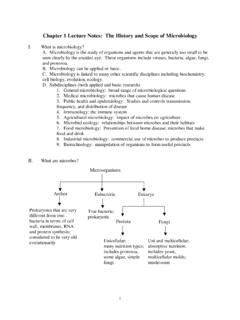Transcription of DEINSTITUTIONALIZATION: A PSYCHIATRIC TITANIC
1 deinstitutionalization : A PSYCHIATRIC TITANIC ---------------------------------------- --------- This excerpt is drawn from Chapters 1, 3 and the Appendix of: Out of the Shadows: Confronting America's Mental Illness Crisis by E. Fuller Torrey, (New York: John Wiley & Sons, 1997). This material is used by permission of John Wiley & Sons, Inc. ---------------------------------------- --------- deinstitutionalization is the name given to the policy of moving severely mentally ill people out of large state institutions and then closing part or all of those institutions; it has been a major contributing factor to the mental illness crisis. (The term also describes a similar process for mentally retarded people, but the focus of this book is exclusively on severe mental illnesses.)
2 deinstitutionalization began in 1955 with the widespread introduction of chlorpromazine, commonly known as Thorazine, the first effective antipsychotic medication, and received a major impetus 10 years later with the enactment of federal Medicaid and Medicare. deinstitutionalization has two parts: the moving of the severely mentally ill out of the state institutions, and the closing of part or all of those institutions. The former affects people who are already mentally ill. The latter affects those who become ill after the policy has gone into effect and for the indefinite future because hospital beds have been permanently eliminated. 1 te, ental hiatric he n general atric in ly ill The magnitude of deinstitutionalization of the severely mentally ill qualifies it as one of the largest social experiments in American history.
3 In 1955, there were 558,239 severely mentally ill patients in the nation's public PSYCHIATRIC hospitals. In 1994, this number had been reduced by 486,620 patients, to 71,619, as seen in Figure It is important to nohowever, that the census of 558,239 patients in public PSYCHIATRIC hospitals in 1955 was in relationship to the nation's total population at the time, which was 164 million. By 1994, the nation's population had increased to 260 million. If there had been the same proportion of patients per population in public mhospitals in 1994 as there had been in 1955, the patients would have totaled 885,010. The true magnitude of deinstitutionalization , then, is the difference between 885,010 and 71,619.
4 In effect, approximately 92 percent of the people who would have been living in public psychospitals in 1955 were not living there in 1994. Even allowing for tapproximately 40,000 patients who occupied PSYCHIATRIC beds ihospitals or the approximately 10,000 patients who occupied psychibeds in community mental health centers (CMHCs) on any given day1994, that still means that approximately 763,391 severely mentalpeople (over three-quarters of a million) are living in the community today who would have been hospitalized 40 years ago. That number is more than the population of Baltimore or San Francisco. deinstitutionalization varied from state to state. In assessing these differences in census for public mental hospitals, it is not sufficient merely to subtract the 1994 number of patients from the 1955 number, because state populations shifted in the various states during those 40 years.
5 In Iowa, West Virginia, and the District of Columbia, the total populations actually decreased during that period, whereas in California, Florida, and Arizona, the population increased dramatically; and in Nevada, it increased more than sevenfold, from million to million. The table in the Appendix takes these population changes into account and provides an effective deinstitutionalization rate for each state based on the number of patients hospitalized in 1994 subtracted from the number of patients that would have been expected to be hospitalized in 1994 based on that state's population. It assumes that the ratio of hospitalized patients to population would have remained constant over the 40 years.
6 Rhode Island, Massachusetts, New Hampshire, Vermont, West Virginia, Arkansas, Wisconsin, and California all have effective deinstitutionalization rates of over 95 percent. Rhode Island's rate is over 98 percent, meaning that for every 100 state residents in public mental hospitals in 1955, fewer than 2 patients are there today. On the other end of the curve, Nevada, Delaware, and the District of Columbia have effective deinstitutionalization rates below 80 percent. Most of those who were deinstitutionalized from the nation's public PSYCHIATRIC hospitals were severely mentally ill. Between 50 and 60 percent of them were diagnosed with schizophrenia. Another 10 to 15 percent were diagnosed with manic-depressive illness and severe depression.
7 An additional 10 to 15 percent were diagnosed with organic brain diseases -- epilepsy, strokes, Alzheimer's disease, and brain damage secondary to trauma. The remaining individuals residing in public PSYCHIATRIC hospitals had conditions such as mental retardation with psychosis, autism and other PSYCHIATRIC disorders of childhood, and alcoholism and drug addiction with concurrent brain damage. The fact that most deinstitutionalized people suffer from various forms of brain dysfunction was not as well understood when the policy of deinstitutionalization got under way. Thus deinstitutionalization has helped create the mental illness crisis by discharging people from public PSYCHIATRIC hospitals without ensuring that they received the medication and rehabilitation services necessary for them to live successfully in the community.
8 deinstitutionalization further exacerbated the situation because, once the public PSYCHIATRIC beds had been closed, they were not available for people who later became mentally ill, and this situation continues up to the present. Consequently, approximately million severely mentally ill people do not receive any PSYCHIATRIC treatment. deinstitutionalization was based on the principle that severe mental illness should be treated in the least restrictive setting. As further defined by President Jimmy Carter's Commission on Mental Health, this ideology rested on "the objective of maintaining the greatest degree of freedom, self-determination, autonomy, dignity, and integrity of body, mind, and spirit for the individual while he or she participates in treatment or receives services.
9 "8 This is a laudable goal and for many, perhaps for the majority of those who are deinstitutionalized, it has been at least partially realized. For a substantial minority, however, deinstitutionalization has been a PSYCHIATRIC TITANIC . Their lives are virtually devoid of "dignity" or "integrity of body, mind, and spirit." "Self-determination" often means merely that the person has a choice of soup kitchens. The "least restrictive setting" frequently turns out to be a cardboard box, a jail cell, or a terror-filled existence plagued by both real and imaginary enemies. CHAPTER 3: JAILS AND PRISONS deinstitutionalization doesn't work. We just switched places. Instead of being in hospitals the people are in jail.
10 The whole system is topsy-turvy and the last person served is the mentally ill person. -- Jail official, Ohio 1 Confining George Wooten in the Denver County Jail in May 1984 was another indicator of the growing mental illness crisis. The 32-year-old Wooten had been jailed over 100 times, including 28 times in the previous 2 years, for creating disturbances in the community. Wooten had been diagnosed with schizophrenia at age 17, and each time he used alcohol or sniffed glue or paint fumes, it exacerbated his schizophrenia and led to his disorderly behavior. According to a newspaper account, "Wooten says he likes jailers and the place. He calls it home.. Eight years ago, the officers might have taken Wooten to a community mental health center, a place that was supposed to help the chronically mentally ill.



















